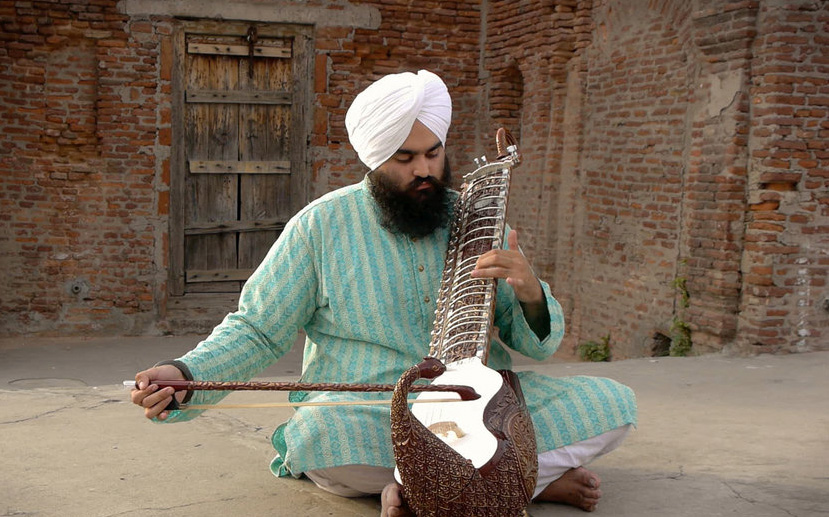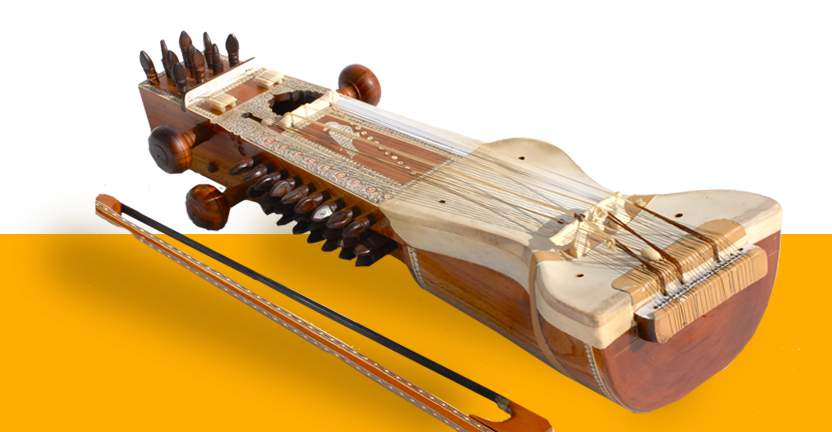Music
Sikh music, also known as Shabad kirtan, is a form of singing of hymns or Shabad in the kirtan-style from the Guru Granth Sahib, which is the holy book of the Sikhs.
This form of singing commenced in the late 16th century as the expression of music regarding mystical poetry, which was accompanied by “rabab,” a musical instrument. This form of music was first expounded by Bhai Mardana, who was an early follower of Guru Nanak, the founder of the Sikh religion.
Following Guru Nanak, all Sikh gurus sang in the already-prevalent folk and classical music styles, accompanied by percussion and stringed instruments. When it came to style, the text was of primary focus, with the music playing a supporting but vital role. The Gurus had already specified the raag for each hymn present in the Guru Granth Sahib.
Major efforts have been put in place since the 1970s in order to revive the rich Sikh music tradition that was initiated and developed by the Sikh Gurus. Several terms have been used to refer to this tradition such as Shabad Keertan Parampara, Gurmat Sangeet, and Gurbani Sangeet Parampara.
Sikh Musical Heritage
The happiness of any human being depends on the harmonious and perfect flow of communication between soul and mind. Success secrets in this are accessible to anyone with the Guru Granth Sahib. This is because its content is musical, music being the language of the soul.
The Siri Guru Granth Sahib may be considered to be a scripture, which is the written embodiment of the Sikh Gurus’ wisdom, but musical instructions are incorporated throughout its text. For the primary part, each section of text expresses its complete and distinct truth only when sung according to the music it prescribes for itself. This is the music of raag, which is a mood that is generated in music.
The Gurus eventually selected 60 such raags to successfully convey the written messages when it came to their teachings. Some were already existent in Indian music whereas they created the others themselves. Put together, these 60 moods represent the “clock of life” around which our experiences are continually moving, so that at a given time, there will be a section of the scripture that will convey how we are feeling. Over time, the entire spectrum of 60 raags gives us the ability to receive the Guru’s message of truth from all emotional angles, which are necessary for us to reach the full potential of our consciousness as well-rounded human beings.

Practice
Devotional and community singing in Sikhism is called “kirtan.” It is generally sung at Gurdwaras, but can also be sung publicly as in “Nagar Kirtan,” where Sikh legends and scriptures are eventually recited in a song, which is set to a certain raga and taal and accompanied with music that uses the “Sargram” notation. Shabad kirtan refers to the recitation in music of the Guru Granth Sahib. The Shabad Kirtan can be listened in a silent manner or sung along as part of the gathered congregation.
A Sikh kirtan is a religious as well as social and aesthetic event, generally held in a congregational setting on Sundays or on certain festivals to honour the Sikh Gurus; however, major temples in the Sikh tradition generally recite kirtans everyday as a sign of daily “bhakti” or devotional remembrance of the name of God. The congregational setting is called a sangat or satsang, which is a word that in ancient Indian texts translates to “like-minded individuals or fellow travellers on a spiritual and religious journey.”
Sikh Musical Instruments
The Gurus themselves created several musical instruments such as the Sarangi, Dilruba, Esraj, and a modification of the Pakhawai, thus creating an early version of the tabla. Until the 1980s, a majority of these musical instruments had almost become extinct; however, the renewed interest and the revival in the recitation of the Shabad Kirtan and other music in the Sikh culture made them extremely popular.
Introduction to Gurbani Kirtan
Gurbani Kirtan refers to the devotional performance of Gurbani in the Sikh tradition according to the prescribed titles over the divine hymns.
With the plentiful spread of several types of Gurbani Kirtan, the obvious question is, “How should the Gurbani Kirtan be correctly sung?” At certain points in time, we hear of terms bandied about such as Rabab, Taus, Tanti Saaz, etc. from those individuals who genuinely want to appear knowledgeable about the legacy of Sikh string instruments. Some of these terms are quite formidable and scary enough for adults, much less children, who are often encouraged to learn the Gurbani Kirtan.

Origin of Sikh Stringed Instruments
A renowned music researcher, Dr David Courtney, has gone on to say that the Taus, which is also known as the Mayuri, was perhaps inspired by Mayuri Veena (another peacock-shaped as well as named instrument), which was a plucked musical instrument.
Within the community of Sikhs, some are of the opinion that the Taus was created during the times of Guru Hargobind; however, there is no historical evidence to support this claim.
The origin of the Dilruba and a resembling instrument called the Esraj that was played with more frequency on the Eastern side of the Indian subcontinent has also been accredited to Muslim instrument makers, who intended to create an instrument that was easier to handle in comparison with the Sarangi, to be played predominantly by women.
Conclusion
Stringed instruments belonging to the Sikh community are vital for Gurbani Kirtan, and they should be the obvious choice if one is trying to rejuvenate a sense of belonging to our rich past because they very fashionable during the times of the living Gurus and take us back to our roots and history.
From the technical aspect, these stringed instruments enable Sikhs to sing all musical genres that have been prescribed and/or passed down the centuries. They are closely associated with the singing of the Gurbani Kirtan, including Dhrupad, Bhajan, Khayal, Folk, and Dakhani to name a few.









